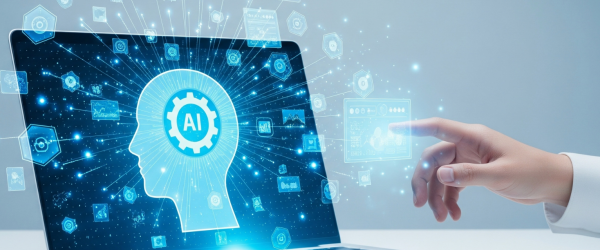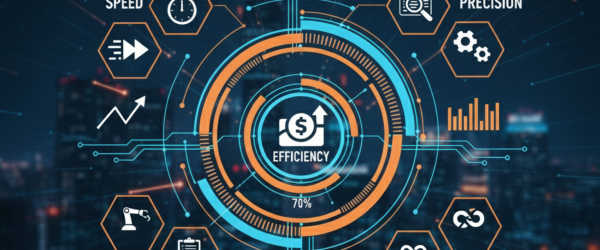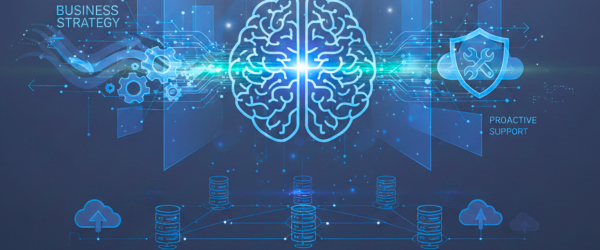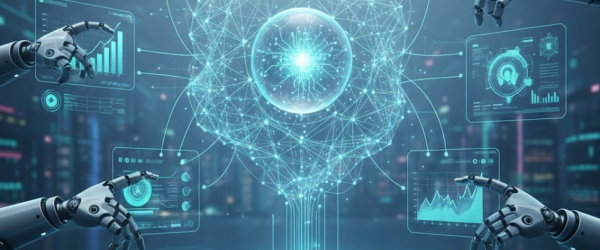Cognitive bias, which refers to the systematic errors in decision-making and judgment, arises from how our brains process and interpret data. In contrast, machine learning, a subfield of artificial intelligence, utilizes statistical models with the aim of minimizing such errors.
Let’s examine whether this assertion holds true and whether machine learning can serve as an effective tool in mitigating human bias.
The origins and characteristics of cognitive bias
By its very nature, machines are devoid of bias, at least in their current stage of development. However, bias can emerge in machine learning during the stages of algorithm creation and data interpretation. Extensive research has identified numerous types of cognitive bias, including conjunction fallacy, representativeness heuristic, misunderstanding of “and,” averaging heuristic, disjunction fallacy, and many others.
These cognitive biases can significantly hinder the effectiveness of machine learning. For example, confirmation bias, which involves accepting beliefs that align with preexisting beliefs, and availability bias, which prioritizes information that is easily accessible to an individual, can impede the accurate interpretation of machine-learned data.
When cognitive bias becomes ingrained in a machine learning model, its long-term effectiveness is compromised. Resolving the challenges associated with human bias in machine learning is a complex task that requires bridging the domains of cognitive psychology and machine learning. Therefore, conducting preliminary research that consolidates compelling evidence from both fields is crucial for addressing the fundamental questions of system design.
The impact of human bias on machine learning
The presence of human bias in machine learning has far-reaching consequences, which can be broadly categorized into two main areas:
- Influence: In the realm of modern technology, the outputs generated by machine learning models are often regarded as factual and trustworthy. However, when human bias infiltrates the machine learning process, it introduces significant inaccuracies into the results. These errors can accumulate over time, especially considering the widespread adoption of these models. Consequently, the impact of biased machine learning outputs becomes more pronounced and can undermine the overall reliability and trustworthiness of the technology.
- Automation: As artificial intelligence (AI) models become more automated, the underlying cognitive biases that are embedded in the machine learning stage are also integrated into the automated processes.
This means that biases present in the data used for training the models, as well as biases introduced during algorithm development, can perpetuate and exacerbate as the models continue to operate autonomously. This poses a challenge as it perpetuates biased decision-making and potentially discriminatory outcomes.
Addressing these consequences requires the implementation of appropriate solutions. It is crucial to conduct thorough assessments to identify and understand the different types of biases present in the system. By doing so, preventative measures can be put in place to mitigate the impact of bias and promote fairness and accuracy in machine learning outcomes.
Preventing or mitigating human bias
The presence of human bias in machine learning can have far-reaching consequences, ranging from ethical concerns to potential financial losses for companies. Therefore, it is crucial to address bias management in the design of machine learning systems.
The first solution involves selecting an appropriate learning model. Each application may require a unique model, but certain parameters can increase the risk of human bias. For example, supervised and unsupervised learning models have their advantages and disadvantages. Supervised models provide more control over data selection but also carry a higher risk of cognitive bias. To mitigate bias, sensitive information should be excluded from the model. Early communication with data scientists helps in selecting the right learning model while considering bias.
The second solution focuses on selecting a representative dataset. When choosing data for training, it is important to ensure sufficient diversity. The model should encompass various groups and support data segmentation. In some cases, developing separate models for different groups may be necessary.
The third solution emphasizes monitoring performance using real data. Testing machine learning models for bias solely in a controlled environment is insufficient to address the main system design questions. Simulating real-world applications during algorithm development reduces the risks associated with human bias.
By implementing these solutions, we can mitigate the impact of human bias in machine learning and ensure more reliable and unbiased outcomes.
Regulatory framework
In the realm of minimizing human bias in machine learning, there is a growing movement towards establishing regulatory frameworks. Alongside the efforts of companies and researchers, various committees and organizations are coming together to form international bodies aimed at setting standards for artificial intelligence.
One notable collaboration is between the International Organization for Standardization (ISO) and the International Electrotechnical Commission (IEC), which have jointly formed the ISO/IEC JTC 1 committee. This committee specifically focuses on addressing key aspects of artificial intelligence, including security, safety, privacy, accuracy, reliability, resilience, and robustness. By developing standardized guidelines and practices, these efforts aim to support the reduction of human bias in machine learning.
Future of Machine Learning
The future of machine learning holds promising advancements driven by emerging technologies. It is no longer limited to tech giants like Google and Facebook; even smaller companies, such as Scale AI, are securing funding to develop their own artificial intelligence using machine learning techniques. This trend highlights the growing accessibility of machine learning technology.
However, as machine learning becomes more pervasive, the need for standardized practices becomes increasingly evident. Standardization is essential to mitigate the potential negative consequences that could arise from the widespread use of machine learning. One critical aspect that requires attention is addressing and overcoming human bias, especially in fields like medicine where artificial intelligence has a direct impact on human lives. To ensure the successful implementation of machine learning, it is crucial to eliminate cognitive bias from its applications.
The future of artificial intelligence relies on the collaborative efforts of researchers, developers, and industry stakeholders to advance the field responsibly and ethically. By overcoming human bias and embracing standardized practices, we can unlock the full potential of machine learning in various domains and shape a positive future for artificial intelligence.
Thank you for reading. For continued insights and in-depth discussions, please follow our blogs at Ezeiatech.







